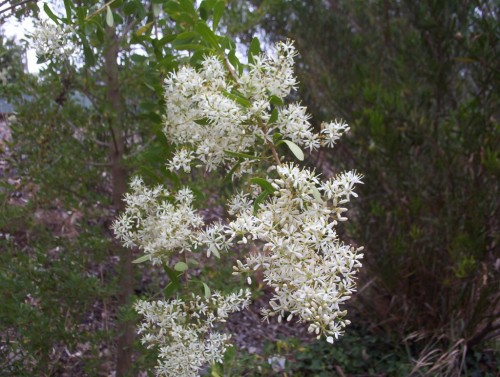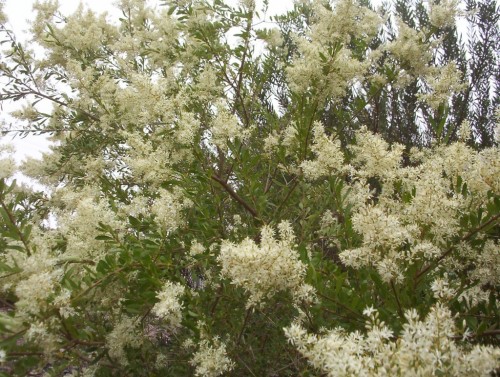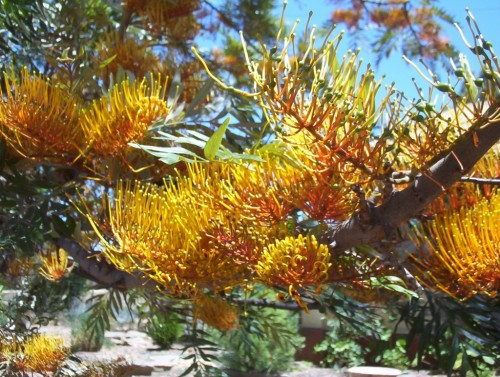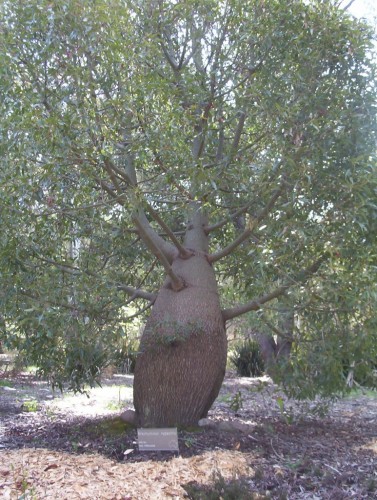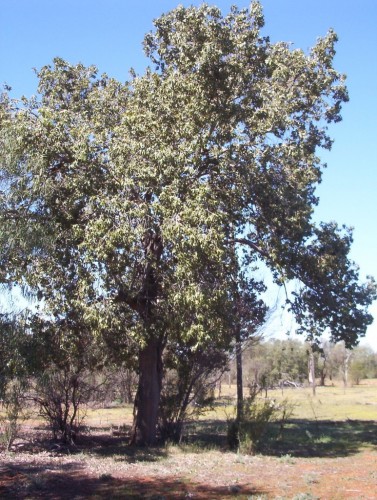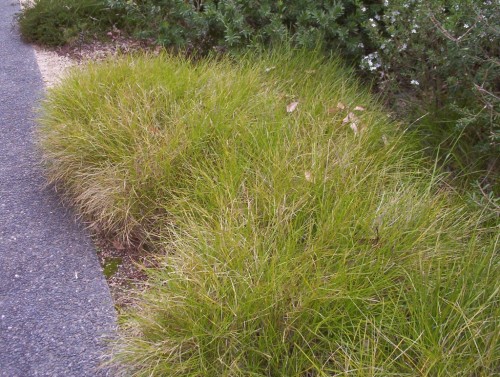Bursaria spinosa (Christmas Bush)
I remember as a child picking armfuls of the branches to take home and arrange in a big vase to place in the open fire place which of course was not in use during the summer. The trouble was that ants love the plants which drip with nectar when in full bloom.
Grevillea robusta
These make good windbreak and screening plants. Many are grown in house yards but as they can be rather large need to be kept away from the house. A general rule is that the tree needs to be as far from the house as the tree’s ultimate height.
Grevillea robusta is the plant onto which other species of grevillea are grafted.
Brachychiton rupestris (Bottle Tree)
The trunks of the trees are prominently bottle shaped with large specimens having a diameter up to 2m (6 feet). The tree is hardy in most areas once established and of course would appreciate some water during hot dry periods. Young trees are slow growing and make attractive and unusual pot plants for some years.
This tree is an important fodder tree for stock during dry periods. The Aborigines ate the young roots and seeds either raw or roasted.
.
Brachychiton populneus (Kurrajong)
These trees are semi deciduous, losing their leaves just before flowering. This particular species has bell shaped cream flowers, blotched with red on the inside. Young leaves are tinged with pink. They are very easy to grow and tolerate a wide range of climatic conditions and soils. Although very drought tolerant, they appreciate water during the summer. This species is frost hardy.
Because they are slow growing while young, they make excellent pot plants and are used for indoor decorations.
Further information can be found here.
Lomandra confertifolia ‘Little Con’
This tufted plant has been around for a while and has proved to be hardy in many locations. This particular selection has been promoted in garden centres for some time. In the photo it is being used as border plant. Lomandra confertifolia originates in Queensland with some forms appearing along the coast to Sydney. The requirements are generally filtered light and good drainage. This small form seems to be hardy in more open positions. Generally they tolerate light to moderate frosts. Grasses can be seen in this use also here.
